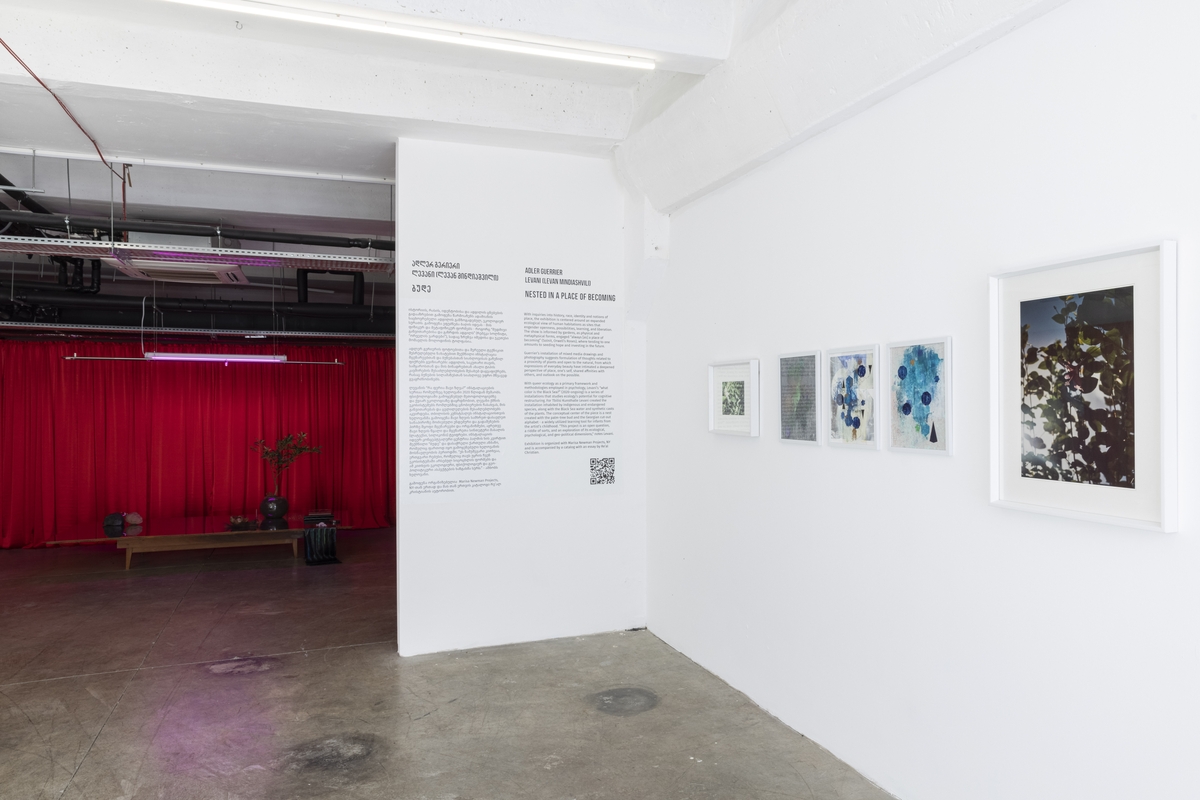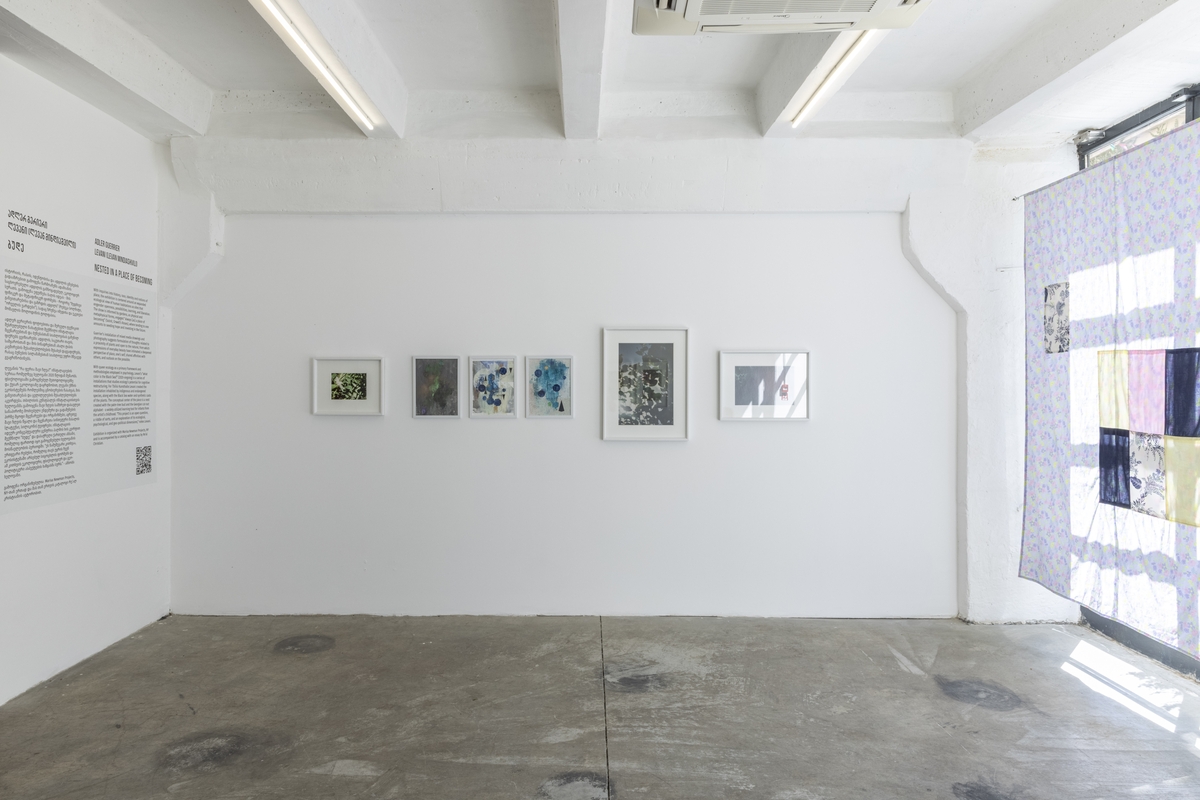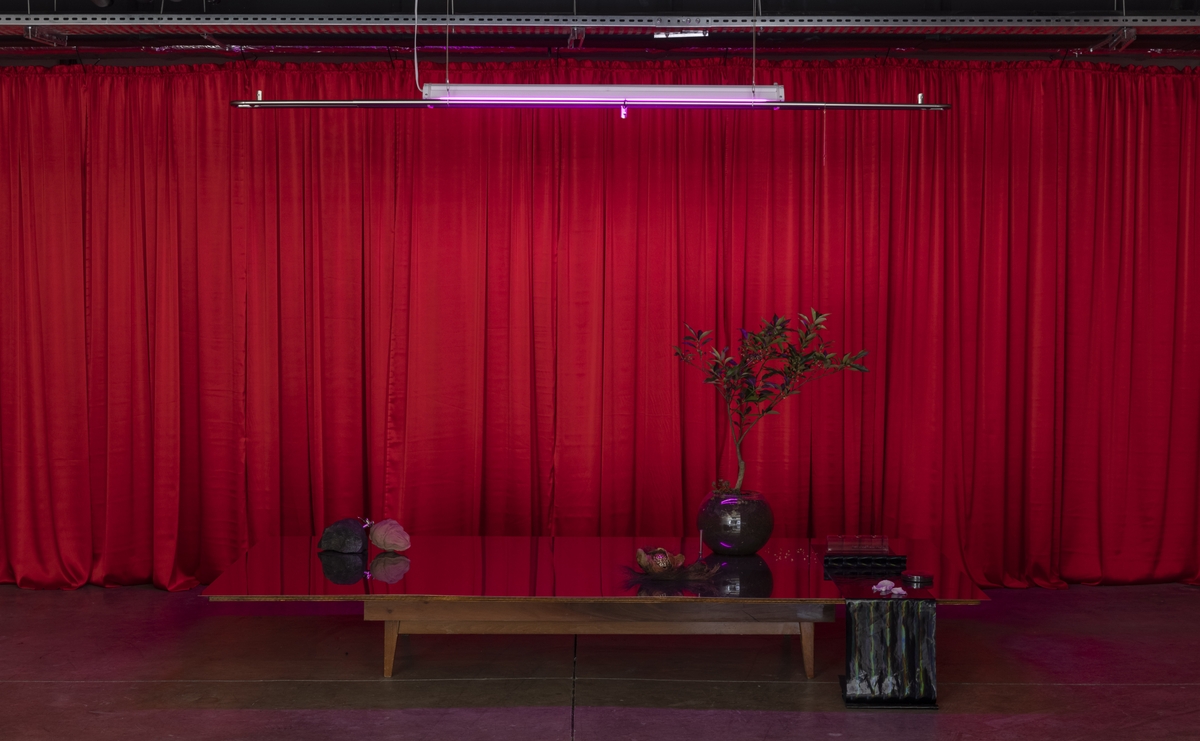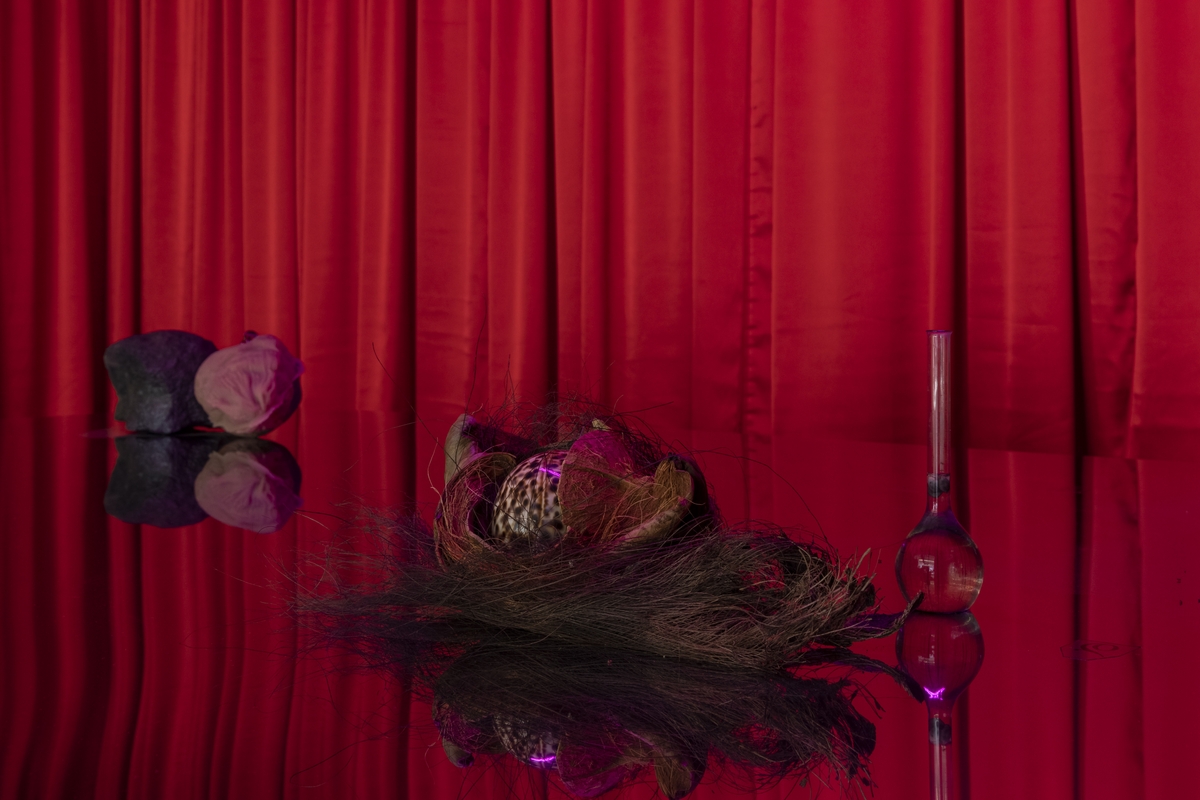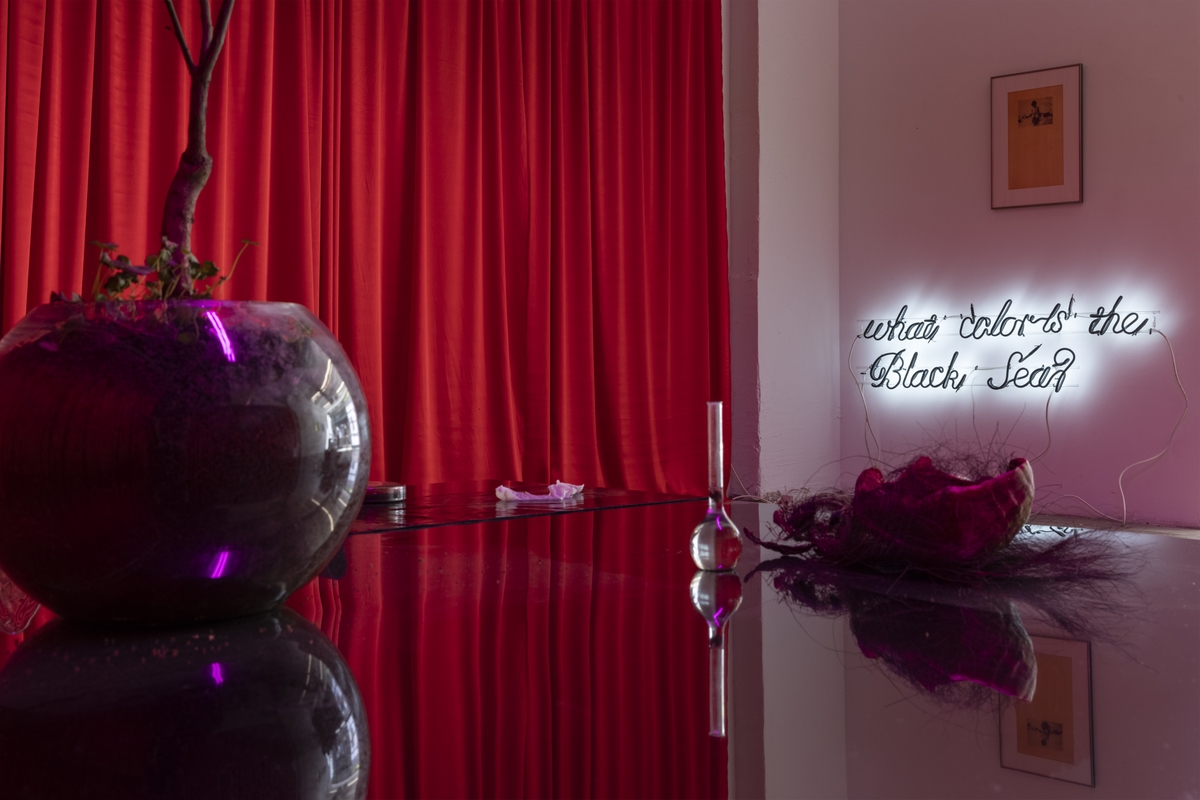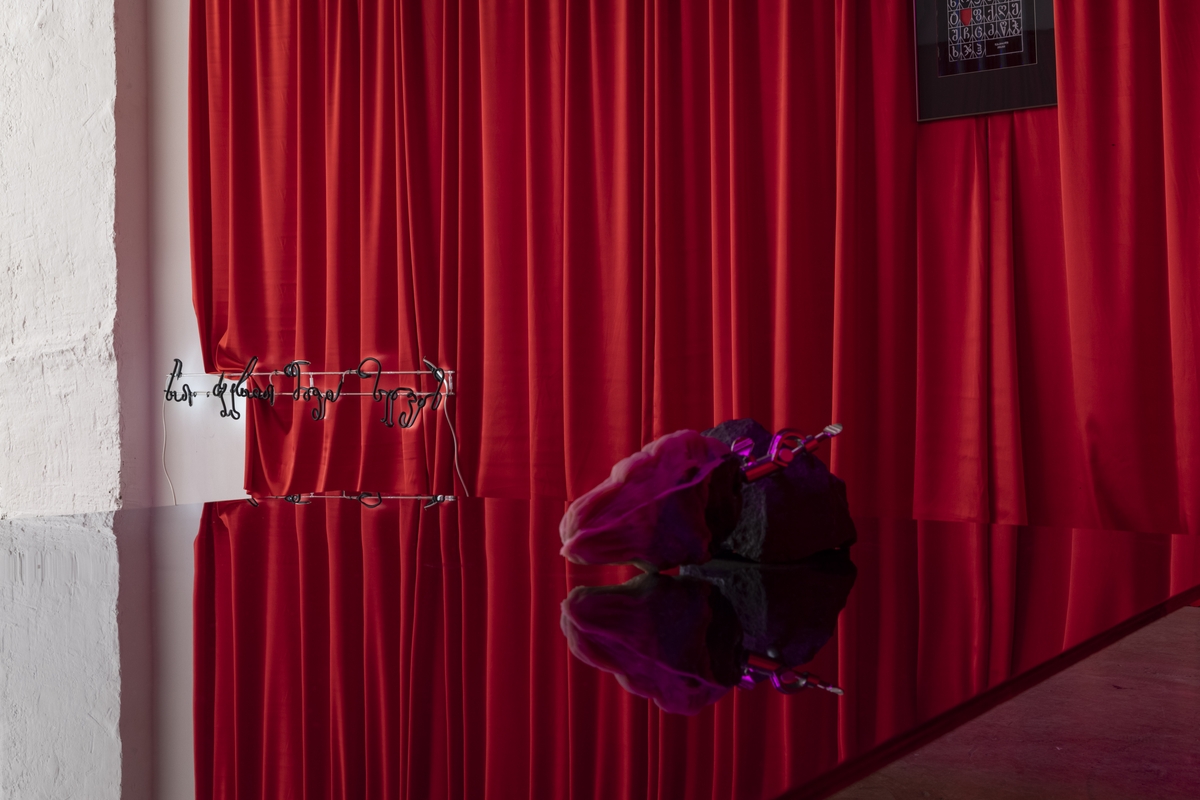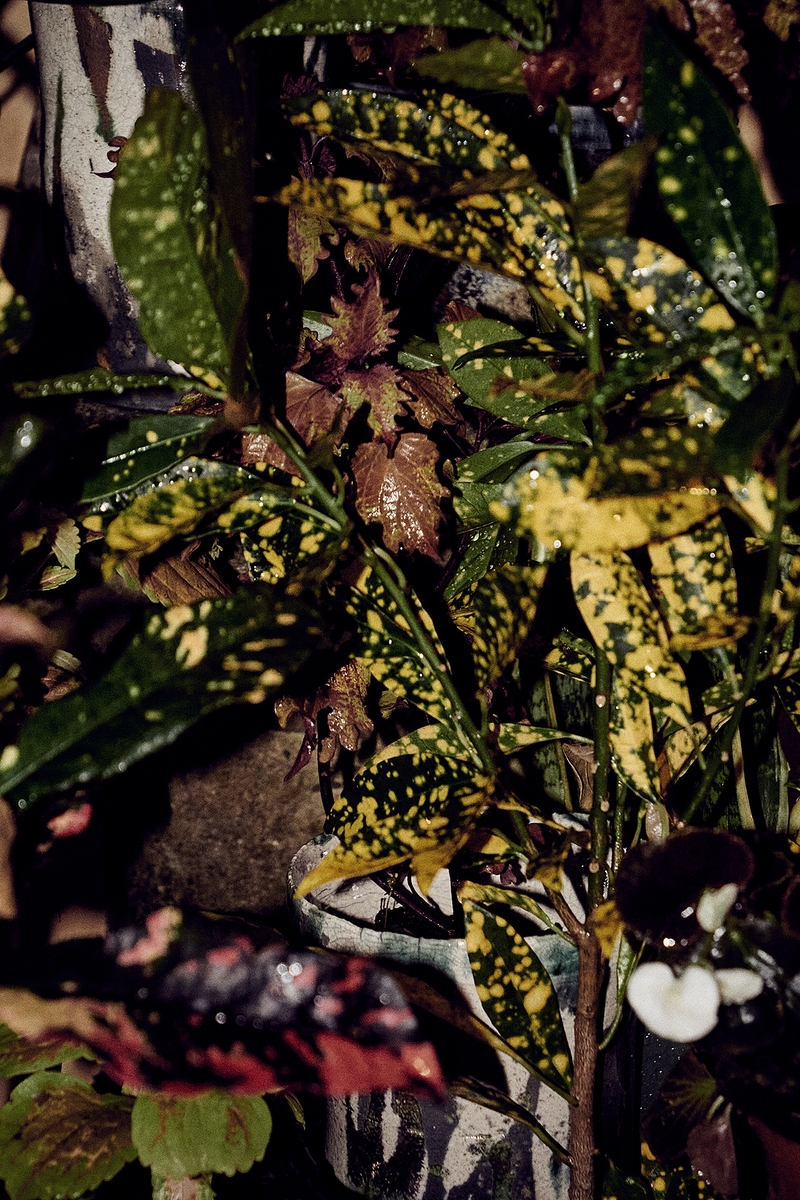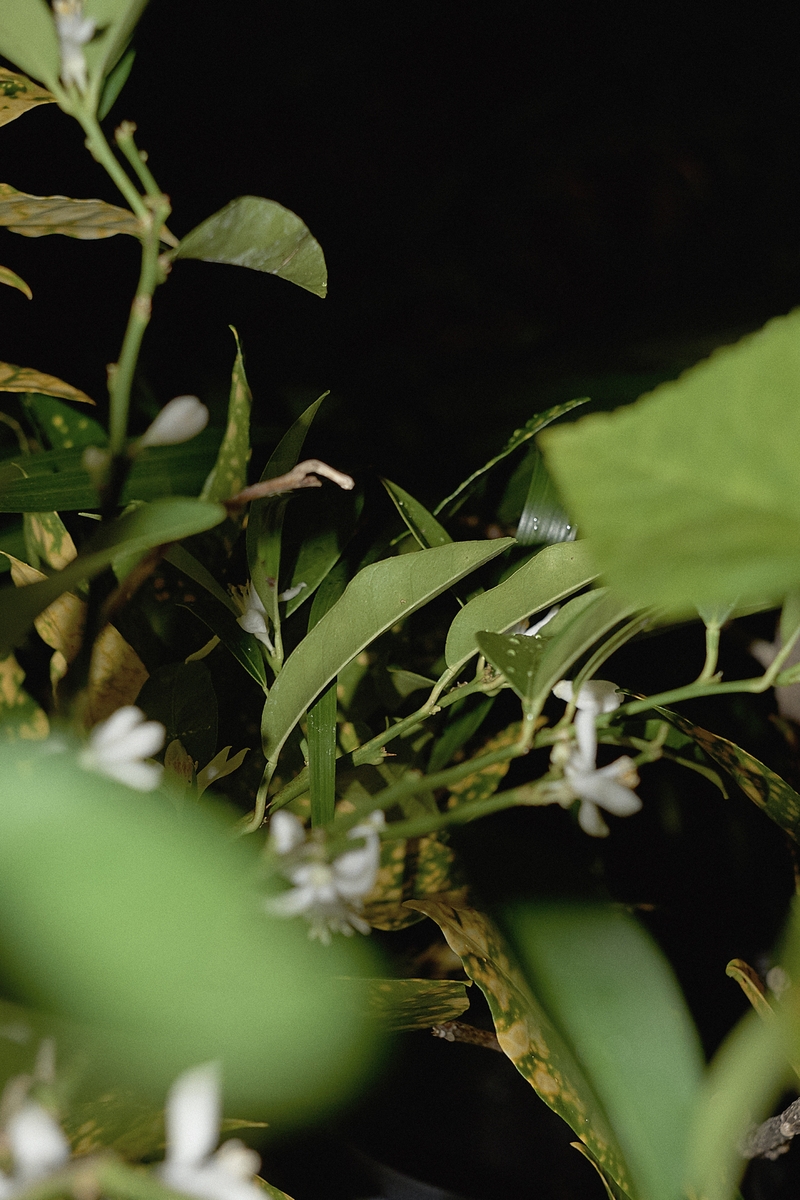ადლერ გერიერი
ლევანი (ლევან მინდიაშვილი)
ბუდე
21 სექტემბერი - 26 ოქტომბერი, 2022
გალერეა ღიაა ოთხშბათიდან კვირის ჩათვლით 13:00 -20:00, სხვა დღეებში შეთანხმებით
მისამართი: ფაბრიკა თბილისი, ნინოშვილის ქუჩა 8, თბილისი, საქართველო
კუნსტჰალე თბილისი მოხარულია წარმოგიდგინოთ ადლერ გერიერისა და ლევანის (ლევან მინდიაშვილი) გამოფენა ფაბრიკა თბილისში.
ისტორიის, რასის, იდენტობისა და ადგილის ცნებების გადააზრებით გამოფენა წარმოაჩენს ადამიანის საცხოვრებელი ადგილის განზოგადებულ, ეკოლოგიურ სურათს. გამოფენა ეფუძნება ბაღის იდეას - მის ფიზიკურ და მეტაფიზიკურ ფორმებს - როგორც ''მუდმივი განვითარებისა და გაზრდის ადგილს'' (რებეკა სოლნიტი, ''ორველის ვარდები''), სადაც ზრუნვა იმედისა და უკეთესი მომავლის მოლოდინის ტოლფასია.
ადლერ გერიერის ფოტოებითა და შერეული ტექნიკით შესრულებული ნახატებით შექმნილი ინსტალაცია მცენარეებთან და ბუნებასთან სიახლოვისას გაჩენილ ფიქრებს გვიზიარებს: ადგილის, საკუთარი თავის, სამყაროსთან და მის ბინადრებთან ახალი ტიპის კავშირების შესაძლებლობების შესახებ დაგვაფიქრებს, რასაც ბუნების სილამაზესთან სიახლოვე უფრო მწვავედ გვაგრძნობინებს.
ლევანის ინსტალაცია ''რა ფერია შავი ზღვა?'' ეკოლოგიის, როგორც კოგნიტიური მექანიზმის გარდამქმნელის შესაძლებლობებს ემყარება. ის თავისთავად თვითმყოფად და დამოუკიდებელ ეკოსისტემას წარმოადგენს: ნამუშევარი ცოცხალ მცენარეებს, მათ სილიკონის ასლებს, აგრარულ განათებებს, ნეონს, ქართული ანბანით აღბეჭდილ ლატექსსა და საუნდს აერთიანებს. უარყოფს რა იდენტობის დუალისტურ კატეგორიებს, ლევანის ნამუშევარში ბინალური დიქოტომიები (ცოცხალი - არაცოცხალი, სულიერი - ფიზიკური, ხელოვნური - ბუნებრივი) ადგილს მრავლობით (პლურივერსალურ) არქეტიპებს უთმობენ. ლევანის ნამუშევარი ზრუნვის, სოლიდარობის და ემპათიის გაჩენის მიზნით ადამიანისა და ზოგადად სიცოცხლის მატერიალური, კოსმოლოგიური და ფსიქოლოგიური ასპექტების იკონოგრაფიას გვთავაზობს.
გამოფენა ორგანიზებულია Marisa Newman Projects, NY-თან ერთად და მას თან ერთვის კატალოგი რე’ალ კრისტიანის ავტორობით.
ადლერ გერიერი მუშაობს და ცხოვრობს მაიამიში. მიღებული აქვს BFA New World School of the Arts- ში. გერიერს ჰქონდა სოლო გამოფენები California African American Museum, Crisp-Ellert Art Museum და Pérez Art Museum Miami. მისი ნამუშევრები გამოფენილა Studio Museum in Harlem, Tate Liverpool, Museum of African Diaspora, NSU Art Museum Fort Lauderdale და Whitney Museum-ში. ადლერ გერიერის ნამუშევრები ინახება Walker Art Center, Institute of Contemporary Art Miami, Pérez Art Museum Miami და Studio Museum in Harlem-ის მუზეუმების კოლექციებში.
ლევანი (ლევან მინდიაშვილი) თბილისში დაბადებული ხელოვანია, რომელიც ნიუ-იორკში ცხოვრობს და მუშაობს. მიღებული აქვს Buenos Aires National University of Arts (IUNA)-ის მაგისტრის წოდება და თბილისის სამხატვრო აკადემიის ბაკალავრის ხარისხი. მისი პერსონალური გამოფენებიდან აღსანიშნავია Marisa Newman Projects NY, NARS Foundation, საქართველოს ეროვნული მუზეუმი, აბრეშუმის მუზეუმი და სხვა. ჯგუფურ გამოფენებს შორის განსაკუთრებით მნიშვნელოვანია პროექტები The Bronx Museum of the Arts; Socrates Sculpture Park; Fridman Gallery, Elizabeth Foundation for Arts; National Art Museum of China; Tartu Art Museum; BRIC Biennial, Vol 3., და სხვაგან. ლევანს მიღებული აქვს შემდეგი ჯილდოები: Artist Alliance Inc. LES Studio Program Fellowship, Peter S. Reed Foundation Grant, Socrates Sculpture Park Fellowship, NYFA Immigrant Artists Mentoring Program, AIM Fellowship the Bronx Museum of the Arts, Creative Times X Summit Grant, და FABLES grant from The National Endowments for Arts. მის შემოქმედებაზე მოთხრობილია გამოცემებში Frieze, Art in America, ArtAsiaPacific, The Brooklyn Rail, Art Papers, The Art Newspaper, Pin-UP Magazine, OSMOS და სხვა და მისი ნამუშევრები ინახება საჯარო კოლექციებში: The National Art Museum of China, Beijing; საქართველოს ეროვნული მუზეუმი (მესტია) და აბრეშუმის მუზეუმი (თბილისი).
რე’ალ კრისტიანი ნიუ იორკში მცხოვრები კრიტიკოსი, რედაქტორი და ხელოვნების ისტორიკოსია. ის იკვლევს და წერს იდენტობაზე, დიასპორასა და მედიაზე. მისი ესსეები, ინტერვიუები და კრიტიკული სტატიები გამოქვეყნებულია ჟურნალებში Art in America, BOMB Magazine, The Brooklyn Rail, და ART PAPERS. დაწერილი აქვს კატალოგისა და საგამოფენო ესსეები ისეთი ინსტიტუციებისა და გალერეებისთვის, როგორებიცაა: CUE Art Foundation, DC Moore Gallery, Sikkema Jenkins & Co., and Performa. მისი კურატორული ნამუშევრებია გამოფენები Steven Anthony Johnson II: Getting Blood from Stone at ISCP (2022), და The earth leaked red ochre (2022) at Miriam Gallery (კატალოგით). ამჟამად რე’ალ კრისტიანი არის Vera List Center for Art and Politics at The New School (New York) საგამოცემო ინიციატივების ასისტენტ დირექტორი.
On Becoming
By Re’al Christian
“Because a garden is always a place of becoming, to make and tend one is a gesture of hope, that these seeds planted will sprout and grow, this tree will bear fruit, that spring will come, and so, probably, will some kind of harvest. It’s an activity deeply invested in the future.” —Rebecca Solnit, Orwell's Roses
Nested in a Place of Becoming resides in an interval between binary systems—material and immaterial, human and nonhuman, synthetic and organic, visible and invisible. This is the space of the other, a gap in-between, within interstices, within times, slipping between objectivities to exist. Hybridization becomes antithetical to a particular or prescribed way of being. As a means of defining the self—not as the other but as (an)other, always in flux and never defined—the hybrid body rests at the precipice of definability and opacity. “Becoming” alludes to a state of movement, a gerund that negates fixability, stillness, knowability. “Becoming” is unfixed, unbordered, unboundaried—a state of being between being, not a here and now, but an “elsewhere, within here.”
Adler Guerrier’s plant-filled vignettes revolve around a still point—a valence of energies captured within a unique ecosystem. The photographs are taken in the artist’s own backyard in Miami, but the focus is not the garden itself, not in its entirety, but the happenings unfolding within it. In closely cropped frames, these myriad species blend together, attract one another, and drift between light and dark, spatially uncertain and optically intimate. In works such as Untitled (At the still point of mottled formations and a scruple of compassion) (2022) and Untitled (Ode to an indispensable, neat, and useful place/At the still point of the turning world) (2022), each plant interlaces to form red, green, and golden tapestries, framed in such a way that facilitates their adjacency. From this vantage point, we’re transported into the garden, not above the plants but alongside them, building, as Guerrier describes it, solidarity through proximity.
In many ways, Guerrier, born in Port-au-Prince, Haiti, undermines a colonial desire to capture and typologically define a subject, a desire historically imbued into photographic media. His Untitled mixed media collages (2022) further abstract the subject into geometric constellations; his fabric piece delves into a formal exploration, alluding to domestic settings while focusing on the interaction of color, demonstrating the ways in which the simplest of forms can welcome the most beautiful encounters.
By reorienting our subjectivities and spatial environments, the artist alludes to what is happening just outside of the frame, revealing the place of image-making. The garden becomes a place of embracing the possibility of other forms of existence, of being, of consciousness. For diasporic people, this multiplicity allows us to place ourselves next to and within the histories of others that came before us. A formative place may be literal or figurative, but it represents its own space of becoming or coming to a here-now: acknowledging a past that we do not know, that is rooted elsewhere, but that carry we with us.
Levani’s installation Birth holds space for intimacies that are both physical and spiritual, bringing our attention to the gaps between beings to consider their consilience. Conjuring the feeling of being held within a bodily vessel, the installation envelops the viewer within undulating red curtains and soft pink light, eliciting an internal organ of unknown origin, consciousness, or host.
At the center of the space, four objects sit on a modern Soviet mirrored stainless-steel tabletop, seeming to float on a pool of still, black water. Around the periphery of the room, neon signage, fluorescent horticulture lights, palm tree buds, laboratory equipment, a Georgian alphabet book, burnt wood, and items collected along various coastlines form a unique garden of the artist’s own making. Each sculpture on the table corresponds to a Georgian letter, suggesting each object’s meaning and alluding to a different stage of becoming:
შ (შეჯვარება) Mating
დ (დაბადება) Birth
ც (ცირკულაცია) Circulation
ე (ეპისტემოლოგია) Epistemology
A pair of blacked-out white neon sculptures, რა ფერია შავი ზღვა? and what Color is the Black Sea?, present an evolving proposition for the artist. The question, which might appear rhetorical, asks viewers to interrogate their fundamental understanding of ecological markers in the region. Posed as a luminescent riddle, it invites us to ponder what ambiguities and conceptual richness lies between blackness, darkness, and light.
Levani looks to the smallest elements to understand the whole of their parts—the individual morphemes or letters used to form a language, or the strings of meta-code that build complex algorithms. In doing so, the artist deconstructs the basic building blocks of creating new epistemologies, hacking into preconceived systems of knowledge to consider the parts above the whole. Ultimately, they question what it is to be human, where the boundaries between the human and nonhuman become porous and fluid, and how we might engender and envision new modes of nurturance, intimacy, longing, and care in seeking out these interspecies connections.
Within Guerrier and Levani’s practices, the garden is a metaphor for conscious cultivation. In drawing upon ecological connections, the artists occupy a similar space of dwelling,
reflecting on the ways in which the garden mirrors society at large as a microcosm for cohabitating in a common space, for taking root in new soil. Within this exhibition, the artists invite us to question our positionality alongside them: How does one grow roots when the soil is infertile, arid, uninhabitable, unwelcoming, or unforgiving? How does one define a sense of place as a refugee, an immigrant, an other?
Kunsthalle Tbilisi plays host to these evocations. In the garden, a new plurality emerges: “I am not only here-now,” but in a constant state of becoming, of growth.
[1] Trinh T. Minh-ha, Elsewhere, Within Here: Immigration, Refugeeism and the Boundary Event (Abingdon: Routledge, 2010).
დამატებითი ინფორმაციისთვის დაგვიკავშირდით ემაილით: info@kunsthalletbilisi.com ან ტელ.: +995 599331157



